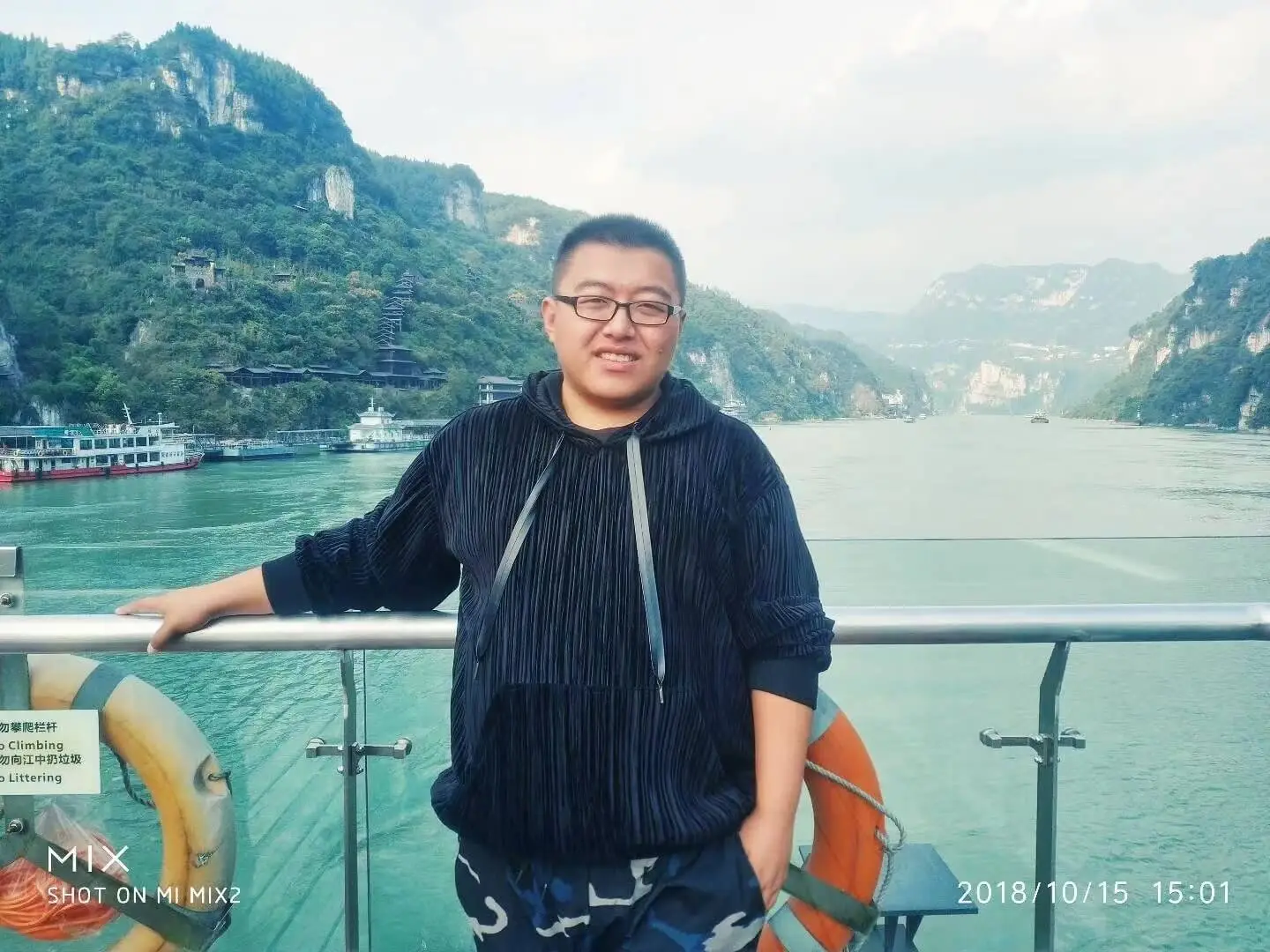When you try to separate a stack of newly purchased plastic pails, you often find their rims stuck together as if glued. After months of storage, cleaned buckets stacked in a warehouse can seem inseparable, like tightly bonded siblings. This frustrating issue can lead to damaged pails, chipped rims, or even injuries from sudden separation during forceful attempts to pull them apart.
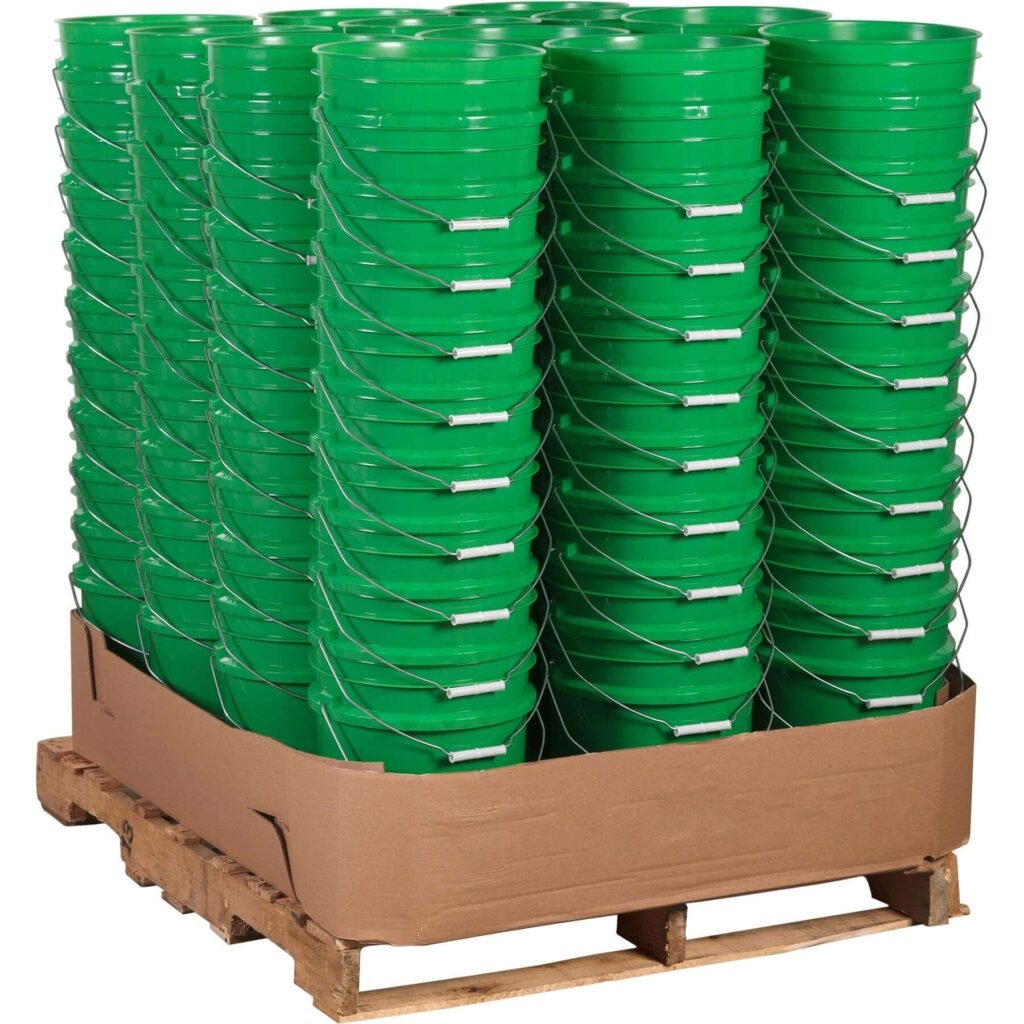
Why Plastic Pails Stick Together?
- Vacuum Suction: When pails are tightly nested, air is squeezed out, creating a vacuum that acts like a powerful grip, holding them together.
- Temperature-Induced Deformation: Changes in temperature cause plastic to expand or contract, misaligning the rims and locking them in place.
- Water Film Stickiness: Residual water on smooth surfaces creates capillary forces, acting like a thin layer of glue.
- Surface Attraction: Materials like HDPE or PP have high surface energy, leading to molecular forces (van der Waals) that increase stickiness.
This article offers practical, safe techniques for separating stuck plastic buckets and provides insights for manufacturers on preventing adhesion during production and packaging.
Precautions Before Operation
Before attempting to separate stuck plastic barrels, take precautions to ensure your safety and protect the buckets’ integrity:
- Assess the extent of sticking: Gently shake or rotate the buckets to check if only the rims are stuck or if the entire bodies are tightly nested. Different situations call for different approaches.
- Protect yourself:
- Wear thick, non-slip gloves to prevent scratches or losing grip when pulling hard.
- Work in a spacious, stable area to avoid falls if the pails separate suddenly.
- Avoid using excessive force, which could break the barrels and cause injury.
- Protect the buckets: Avoid using sharp tools (e.g., knives or screwdrivers) to pry the rims, as this can easily cause permanent damage, such as cracks or chips.
Tool-free separation technique
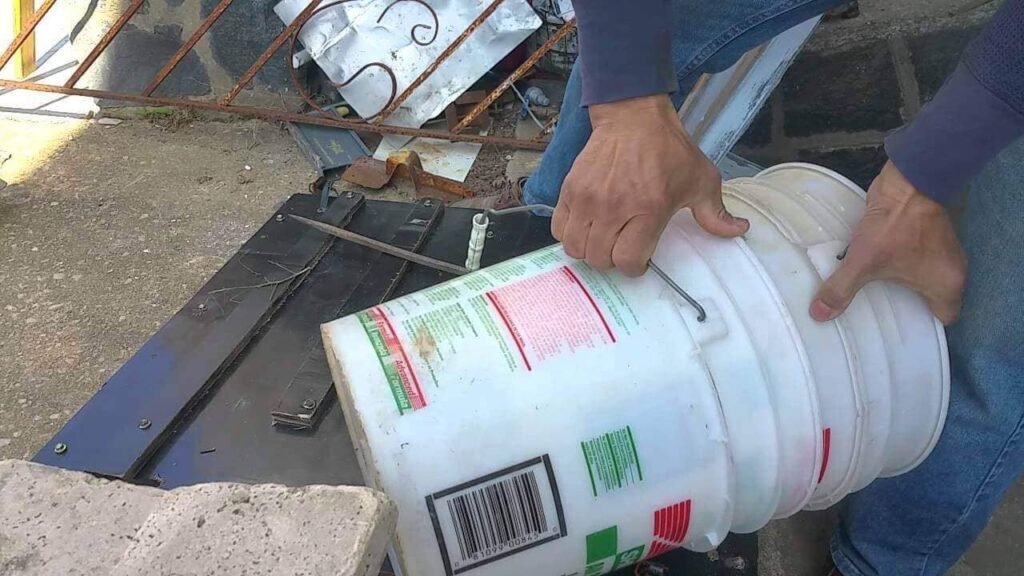
The following method is simple and easy to do at home or in a small workplace, and does not require complicated tools:
| Methods | Operation Instructions | Principle description | Key points |
| Rotation method | Hold the upper and lower pails with both hands and rotate them slowly and forcefully in opposite directions. | Torsion force can overcome surface friction or slight deformation, destroying the tight fit of pail nesting. | Smooth movement, avoid twisting violently, suitable for mild adhesion. |
| Slapping method | Use the base of your palm or a rubber hammer to gently tap along the top edge of the lower pail. | Slight vibration loosens vacuum adsorption or stuck points, reducing nesting resistance. | Use moderate force, avoid hitting the bottom of the pail or the edge of the pail mouth to prevent plastic deformation. |
| Temperature difference method | Pour ice water into the inner pail and let it stand for 2-3 minutes to cool; pour warm water on the seams of the outer barrel to make it expand slightly. | The thermal expansion and contraction of plastics create a gap between the inner and outer buckets, reducing adhesion. | Do not use boiling water or extremely cold liquids to prevent cracking; water does not penetrate into the gap, and should be wiped dry before separation. |
| Lubrication method | Drop a proper amount of lubricant (such as diluted detergent, food-grade mineral oil or WD-40) into the seams, wait for a while, and then rotate or tap. | Lubricants reduce friction and destroy adhesion surface resistance. | Use environmentally friendly and washable lubricants to avoid grease residue, and wipe in time after lubrication. |
Methods that require simple tools
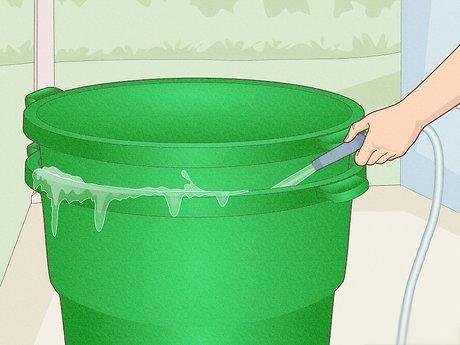
For stubborn adhesions, you can use simple tools or external force, but be extra careful when operating:
| Methods | Operation Instructions | Principle description | Key points |
| Compressed air method | Use a low-pressure air gun to blow air into the gap of the bucket mouth for a few seconds. | Airflow penetrates the gap, destroying the vacuum seal, creating a pressure difference to promote separation. | Use a low-pressure air gun and wear protective goggles. Avoid high-pressure operation to prevent injury or damage. |
| Warm water bath method | Immerse the bucket mouth in 40-50°C warm water and let it stand for 2-3 minutes. | Warm water softens and slightly expands the plastic structure, helping to loosen the stuck point. | Soak only the stuck area in warm water (40-50°C) to avoid overheating the entire pail. Keep the temperature safe and wipe the surface dry before separating. |
| Lever method | Use a plastic scraper or butter knife to gently pry at the stable fulcrum of the barrel body while rotating it. | The lever force creates a micro gap, which can break the stuck point when combined with rotation. | Use a low-pressure air gun and wear protective goggles. Avoid high-pressure operations to prevent injury or damage. |
Preventing sticking
There are ways to separate stuck plastic buckets, but prevention is better than a cure. The following suggestions can effectively reduce the risk of sticking:
- Correct stacking: When stacking, place a layer of cardboard, thin cloth or bubble film between the pail mouths to break the vacuum and reduce friction.
- Thoroughly dry: After cleaning, make sure the inside and outside of the buckets are completely dry, especially the pail mouth and contact surface, to avoid water film stickiness.
- Avoid high temperature storage: High temperature makes plastic easy to deform, increasing the risk of sticking. Store in a cool and dry place.
- Regular inspection: For barrels that have been stacked for a long time, regularly check for signs of sticking and separate them in time.
How to avoid adhesion during plastic pail production and packaging?
The adhesion of plastic buckets not only frustrates users but also causes significant losses for manufacturers. Customer complaints or returns from adhesion can harm brand reputation, while manufacturers face additional rework costs and reduced efficiency. If adhesion issues are not addressed before shipment, they may worsen during transportation, warehousing, or end use. Therefore, optimizing production and packaging processes to prevent adhesion is a critical priority for manufacturers.
As a leading plastic pail manufacturer, Enlightening Plast understands the critical need to prevent adhesion issues. We recommend collaborating with customers during order planning to implement tailored production and packaging solutions that prevent sticking issues from the outset.
Material and formulation optimization: reducing plastic surface activity
Starting from the selection of raw materials and the adjustment of the formula, adhesion can be significantly reduced:
Adding an anti-blocking agent (anti-sticking agent):
- Type: Food-grade lubricant, such as erucic acid amide, oleic acid amide.
- Principle: These additives migrate to the surface after plastic molding to form a molecular-level lubricating layer to reduce friction and viscosity.
- Dosage control: 0.05%-0.3%, excessive amounts may affect subsequent printing or bonding processes.
Select low-absorption raw materials:
- Preferably use HDPE with a melt index of ≥4g/10min, with a stable shrinkage rate of 1.5-2%. Its molecular chain is regular, the shrinkage is more stable, and the risk of adhesion is lower.
- Control the proportion of recycled materials to avoid impurities, causing increased surface roughness and enhancing viscosity.
Mold and structure design: the key to physical anti-sticking
By optimizing the mold and pail structure, adhesion is reduced from a physical level:
Negative pressure prevention design of bucket mouth:
- Add micro-gas grooves (0.1-0.3mm shallow grooves) on the inside of the barrel mouth to break the vacuum seal.
- 1°-3° reverse slope (flare mouth) is designed on the outside of the bucket mouth to facilitate demoulding and separation.
Anti-nesting structure of Pail :
- Add convex ribs or reinforcing ribs to the bottom of the pail to reduce the contact area of the plane.
- Waves or vertical lines are designed on the side wall to destroy the adsorption of smooth curved surfaces.
Precise control of the injection molding process
The process parameters in the production process directly affect the tendency of adhesion:
Cooling time and temperature management:
- Extend the pressure holding cooling time to ensure that the plastic is fully set and reduce thermal shrinkage deformation.
- Control the mold temperature within the range of ±2°C to avoid local overheating and deformation.
Optimize the demoulding parameters:
- Reduce the demoulding speed to prevent instantaneous vacuum adsorption.
- Control the spraying frequency of silicone release agents and clean the mold regularly to prevent residues from affecting the surface quality.
Surface treatment technology application
Through surface modification technology, the risk of adhesion is further reduced:
Plasma surface treatment:
Reduce the surface energy of the bucket mouth (dyne value ≤ 36 mN/m) and reduce the intermolecular adsorption force.
Micro-texture etching (EDM):
Laser processing of micron-level rough texture in the mold cavity to reduce the contact area.
Food-grade anti-stick coating:
For high-demand scenarios, PTFE nano-layer (fluoropolymer coating) can be sprayed to ensure food safety.
Pre-shipment handling and packaging specifications
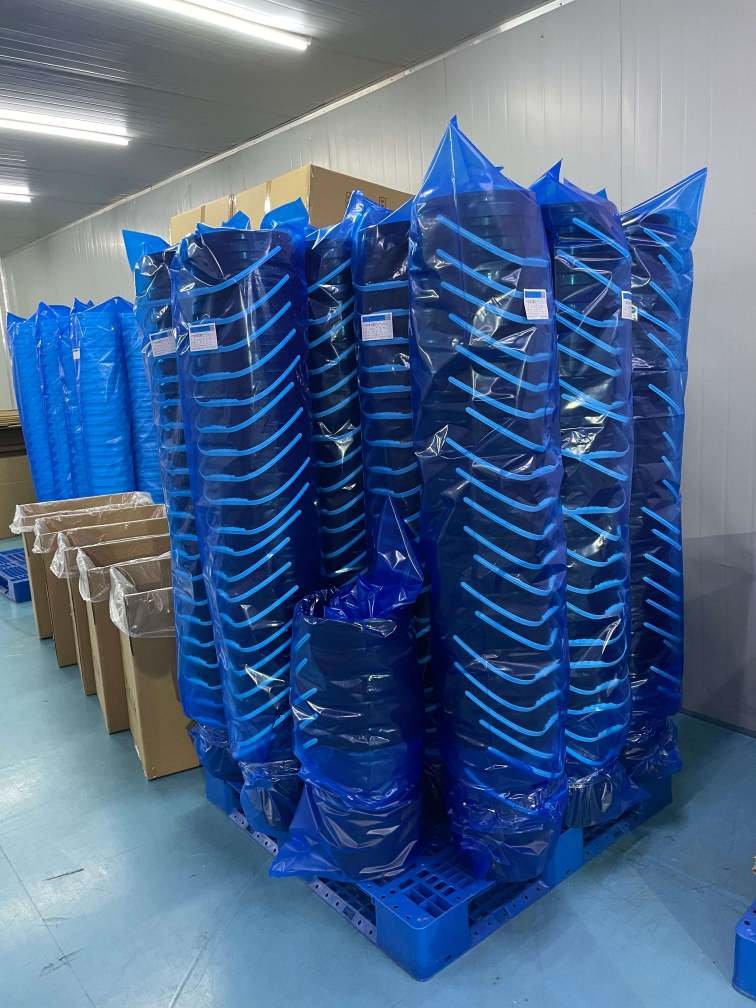
After the production of plastic pails, avoid adhesion through scientific treatment and packaging:
Forced cooling time:
After the production line, stand in a constant temperature warehouse for 24 hours to release internal stress and stabilize the shape.
Isolation medium application:
The pail mouth is pasted with degradable anti-sticking release paper, or sprayed with food-grade slippery powder (such as corn starch, talcum powder).
Scientific stacking solution:
Use staggered stacking to avoid the bucket mouth from being completely closed and aligned.
Use paper partitions and wrapping film packaging to physically isolate and fix the barrel.
Conclusion
Although the problem of plastic pails being unable to be separated is a minor one, it greatly affects the user experience and factory efficiency.
As a professional plastic pail manufacturer, Enlightening Plast always adheres to the whole process control from mold design, raw material selection, production process to packaging and transportation, and cooperates with customers to avoid risks from the source and improve efficiency and satisfaction.

